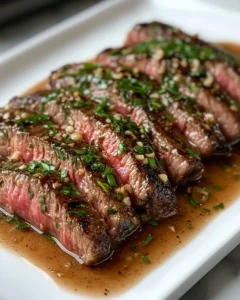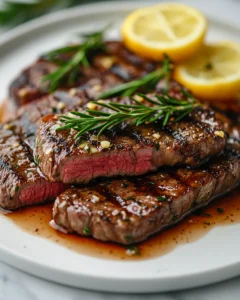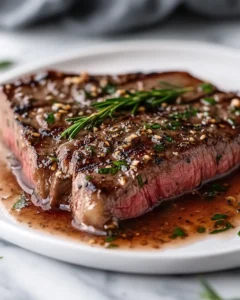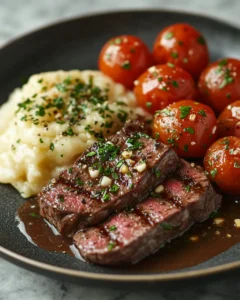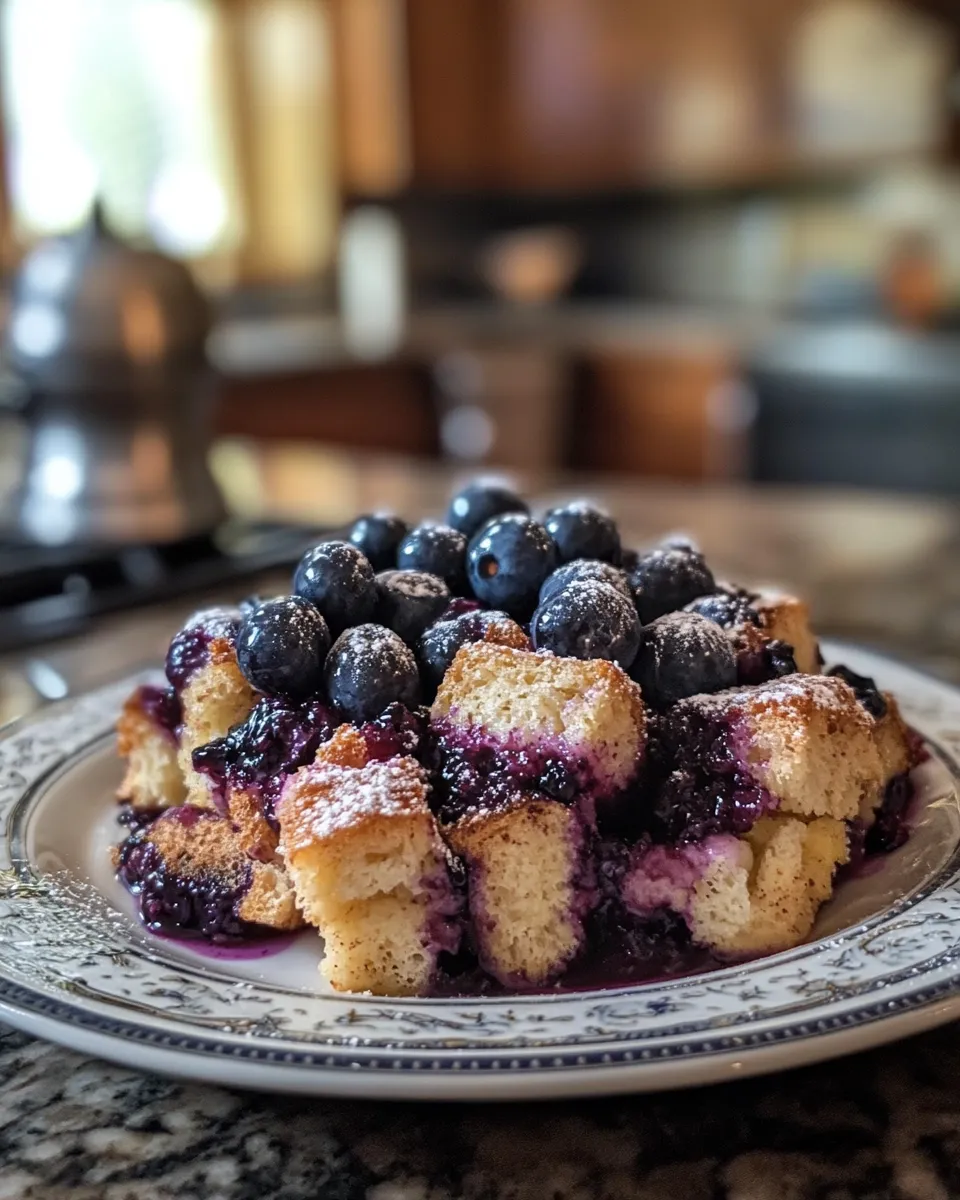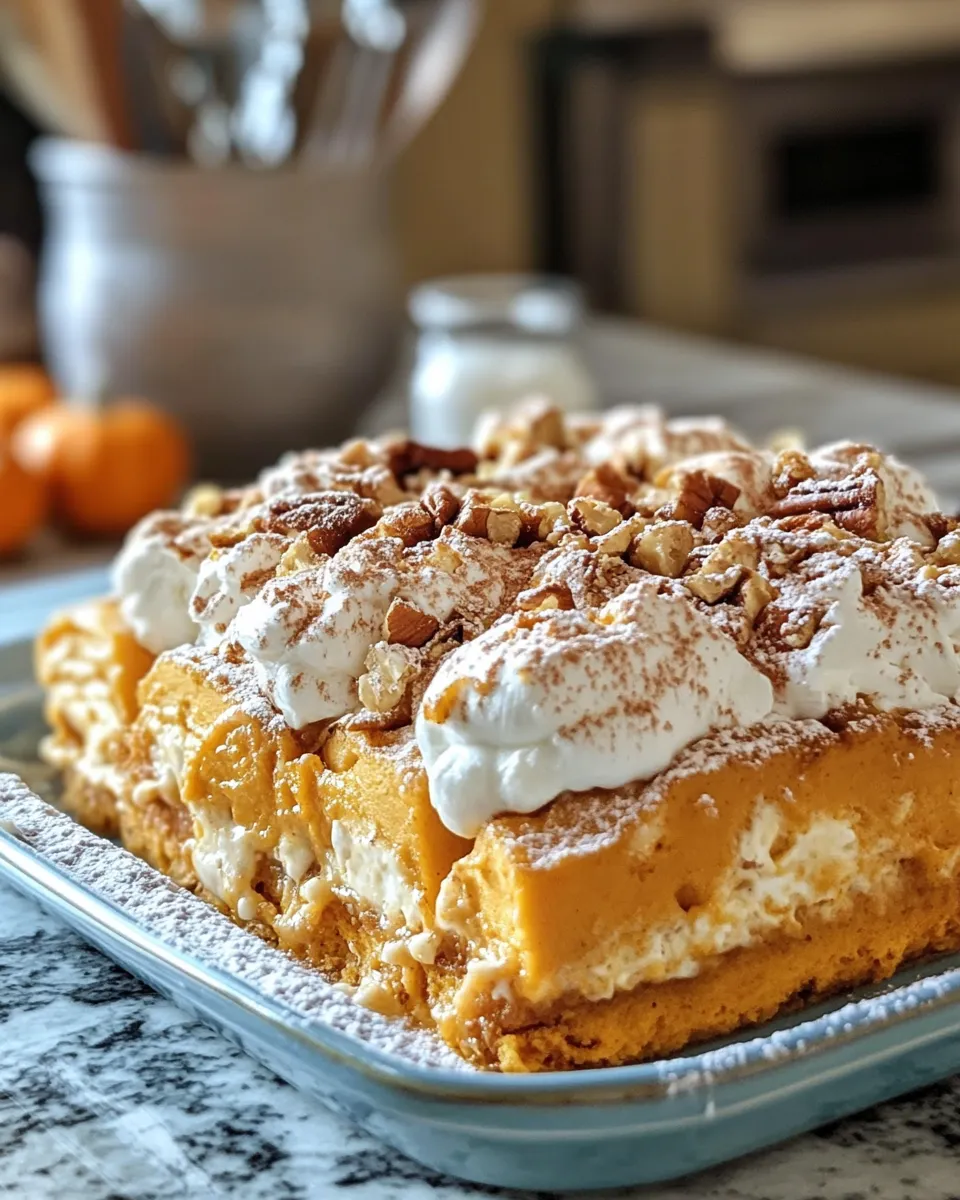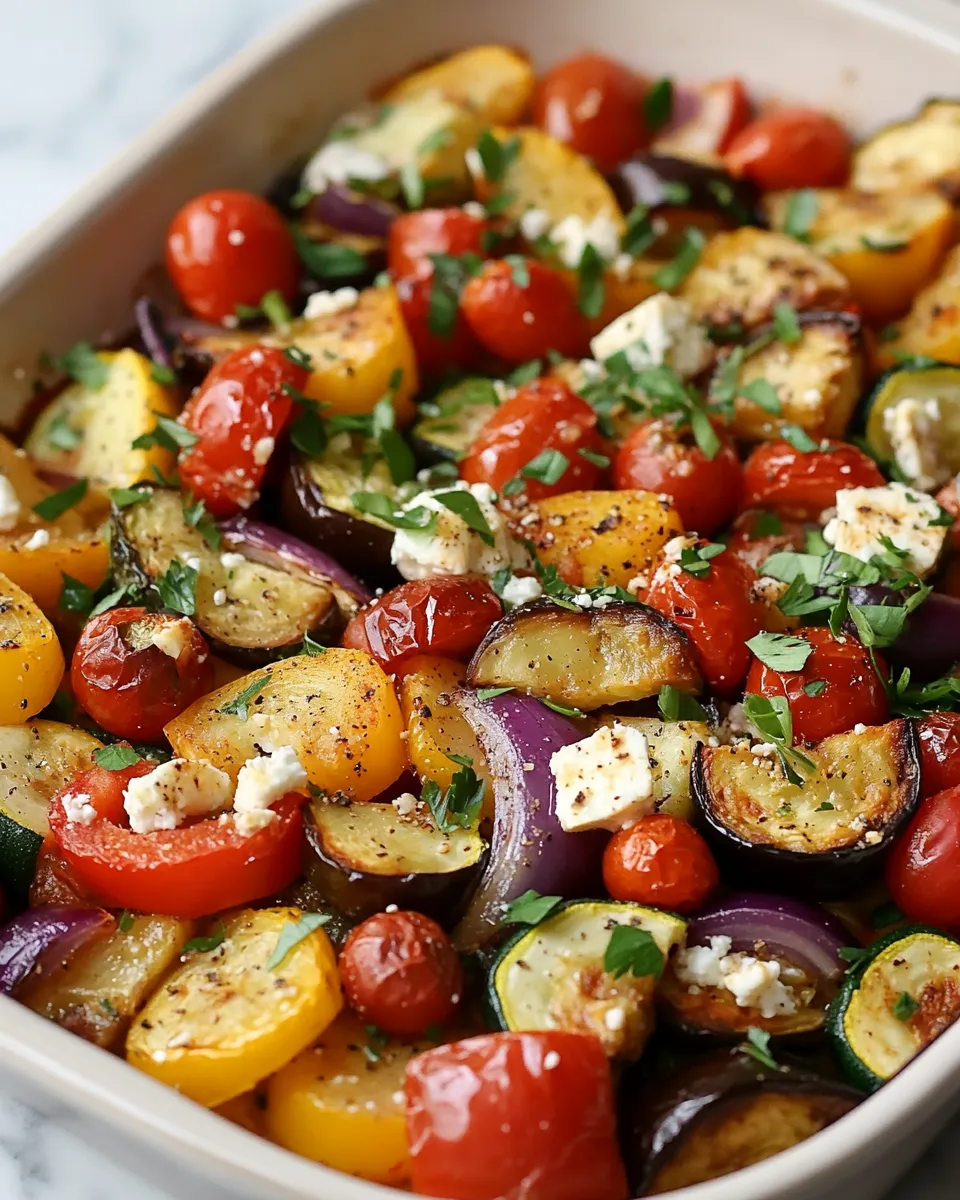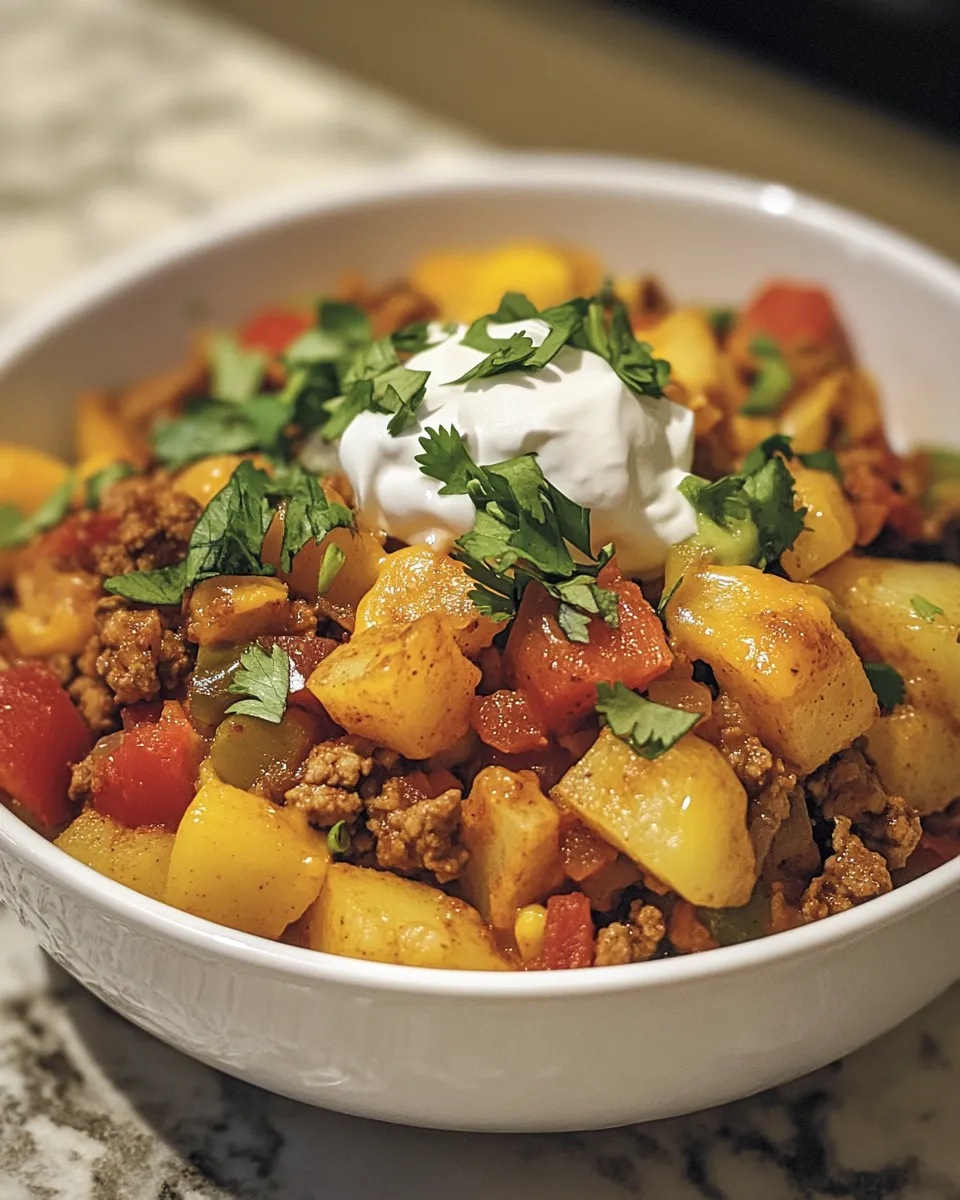Picture this: the sun has just set, the air carries a gentle chill, and the kitchen glows with warmth. It’s the perfect moment to bring out a dish that’s hearty, flavorful, and comforting—Bavette Steak with Irresistible Roasted Garlic Pan Sauce. This is not just another steak dinner. It’s a celebration of simple ingredients, brought together to deliver rich, savory depth in every bite.
Inspired by rustic home-cooking traditions and the universal love for a well-seared steak, this dish pays homage to the kind of meals that turn ordinary evenings into memorable ones. It’s a favorite for Sunday dinners, date nights at home, or anytime you want to treat yourself to something deeply satisfying without the fuss of dining out. Let’s dive into a recipe that transforms the humble bavette cut into a steakhouse-worthy experience, topped with a luscious garlic-infused pan sauce that will leave you licking the plate clean.
Why You’ll Love This Recipe
-
Simple, wholesome ingredients you likely already have at home
-
No wine or alcohol required, just real flavor from roasted garlic, beef drippings, and herbs
-
A pan sauce so good it deserves its own spotlight
-
Ideal for a weeknight upgrade or weekend indulgence
-
Naturally fits a low-carb or gluten-free diet (depending on sides)
-
Great for those looking to expand their steak cooking skills
What is Bavette Steak?
Bavette steak, often called flap steak, comes from the lower belly of the cow—close to the flank. It’s a lesser-known cut that boasts big, beefy flavor, similar to skirt or flank steak, but with more marbling and tenderness when cooked right. It’s affordable, quick to cook, and perfect for soaking up sauces and marinades.
When cooked medium-rare and sliced against the grain, bavette steak is incredibly tender, juicy, and rich in taste. It’s an underappreciated gem that’s finally getting the recognition it deserves in modern home kitchens.
Ingredients
For the Bavette Steak:
-
1.5 to 2 lbs bavette steak (trimmed of excess fat)
-
1½ tsp kosher salt
-
1 tsp freshly cracked black pepper
-
1 tbsp olive oil
-
1 tbsp unsalted butter
For the Roasted Garlic Pan Sauce:
-
1 whole head of garlic
-
2 tbsp olive oil (for roasting garlic)
-
2 tbsp unsalted butter (divided)
-
1 small shallot, finely minced
-
¾ cup beef broth (low sodium)
-
1 tsp Dijon mustard
-
1 tsp Worcestershire sauce
-
1 tsp fresh thyme leaves (or ½ tsp dried thyme)
-
Salt and pepper to taste
-
½ tsp cornstarch + 1 tbsp water (optional, for thickening)
Kitchen Tools You’ll Need
-
Cast iron skillet or heavy-bottomed pan
-
Baking tray and foil (for garlic roasting)
-
Small saucepan
-
Knife and cutting board
-
Tongs or spatula
-
Meat thermometer (optional, but recommended)
Step-by-Step Instructions
Step 1: Roast the Garlic
Roasted garlic is the soul of this dish. Its sweet, mellow flavor infuses the pan sauce with rich, aromatic depth that balances the savory steak beautifully. Don’t rush this part—it’s worth every minute.
Start by preheating your oven to 400°F (200°C). Take a whole bulb of garlic and slice off just the top—about ¼ inch—exposing the tops of the individual cloves. Don’t separate them; the bulb should stay intact.
Place the bulb on a square of aluminum foil. Drizzle it generously with olive oil, making sure it seeps down into the exposed cloves. Wrap it up loosely, forming a pouch, and place it directly on the oven rack or a small baking tray.
Roast for 35 to 40 minutes, or until the garlic is golden, soft, and fragrant. The cloves should be lightly browned and buttery in texture—easy to squeeze out and mash.
Once roasted, allow the garlic to cool slightly so it’s safe to handle. Then gently squeeze from the base of the bulb to release the soft cloves. Place them in a small bowl and mash with a fork until smooth. Set aside—this roasted garlic will be the magic touch in your sauce.
Step 2: Prep and Season the Steak
While the garlic roasts, prepare your bavette steak. This step is all about maximizing flavor and ensuring even cooking.
First, pat the steak thoroughly dry with paper towels. Removing surface moisture is key to achieving that irresistible golden-brown crust when searing. Then, season both sides of the steak generously with kosher salt and freshly cracked black pepper. The bold flavor of bavette can handle a hearty seasoning.
Let the steak rest at room temperature for at least 30 minutes before cooking. This allows the meat to cook more evenly and helps develop a better sear.
Step 3: Sear the Steak
Heat 1 tablespoon of olive oil in a cast iron skillet or heavy-bottomed pan over medium-high heat. You want the oil shimmering and just starting to smoke—that’s your cue it’s hot enough.
Carefully lay the steak into the pan. Let it sear undisturbed for 3 to 4 minutes per side, depending on thickness, for medium-rare doneness. Use tongs to flip once, getting that deep caramelization on both sides.
During the final minute of cooking, add 1 tablespoon of butter to the pan. As it melts, tilt the pan slightly and use a spoon to baste the steak with the foamy butter. This boosts flavor and gives the meat a beautiful glossy finish.
Once done, transfer the steak to a cutting board and tent it loosely with foil. Let it rest for 10 minutes to allow the juices to redistribute. This step is crucial for keeping the meat moist and tender when sliced.
Step 4: Make the Roasted Garlic Pan Sauce
While the steak rests, it’s time to turn the flavorful pan drippings into a show-stopping sauce.
Using the same skillet—don’t clean it—set the heat to medium. Add 1 tablespoon of butter and 1 finely minced shallot. Sauté for 2 to 3 minutes, stirring occasionally, until the shallots are soft and slightly golden.
Now, stir in the mashed roasted garlic, 1 teaspoon of Dijon mustard, and 1 teaspoon of fresh thyme leaves (or ½ tsp dried). These ingredients form the backbone of the sauce’s flavor.
Next, pour in ¾ cup of low-sodium beef broth and 1 teaspoon of Worcestershire sauce. Use a wooden spoon to scrape up all the browned bits from the bottom of the pan—this is where the flavor lives.
Simmer the sauce for 4 to 5 minutes, allowing it to reduce slightly and thicken naturally. If you prefer a more velvety consistency, mix ½ teaspoon of cornstarch with 1 tablespoon of water in a small bowl and stir it into the sauce.
Finish the sauce with 1 final tablespoon of butter, stirring it in off the heat. Taste and adjust the seasoning with salt and pepper as needed. The result should be smooth, savory, and full of umami.
Step 5: Slice and Serve
Now it’s time to bring everything together.
Uncover the rested bavette steak and, using a sharp knife, slice it thinly against the grain. This is especially important with bavette, as it has long muscle fibers. Slicing across those fibers shortens them, making the steak tender and easy to chew.
Arrange the slices on a platter or individual plates. Spoon the roasted garlic pan sauce generously over the top, letting it pool around the steak. Garnish with a few fresh thyme leaves or chopped parsley for a touch of color and herbal freshness.
Serve immediately while hot, alongside your favorite sides. This is steakhouse flavor, made simple at home.
Serving Suggestions
Pair your bavette steak with roasted garlic pan sauce with sides that complement its bold, savory character. Here are a few winning combinations:
-
Creamy mashed potatoes or garlic herb mashed cauliflower
-
Sautéed green beans with lemon zest
-
Roasted carrots or Brussels sprouts
-
Buttery rice pilaf or simple herbed couscous
-
Fresh arugula salad with lemon vinaigrette for contrast
This dish also shines with warm flatbread or sourdough to mop up the leftover sauce.
Expert Tips for Perfect Bavette Steak
-
Always rest your steak after cooking. This ensures juices redistribute and don’t run out when slicing.
-
Cook in a hot pan to get a beautiful sear and crust on the outside.
-
Use a thermometer if you’re unsure: 130–135°F is ideal for medium-rare.
-
Slice against the grain. This is crucial for tenderness. Bavette has long fibers, so cutting across them makes a big difference.
-
Don’t skip the roasted garlic. It transforms the sauce from good to unforgettable.
Variations and Add-Ons
-
Add mushrooms to the sauce for an earthy, umami-packed variation.
-
Switch up the herbs: rosemary or oregano can add a different twist.
-
Spice it up with a pinch of red pepper flakes in the sauce.
-
Try a compound butter on top of the steak instead of pan sauce if you’re short on time.
Storage and Reheating Tips
-
Refrigerate leftovers in an airtight container for up to 3 days.
-
Reheat gently in a skillet over low heat or in the oven at 275°F covered with foil. Avoid microwaving, as it can make the steak tough.
-
Leftover steak slices make a fantastic addition to salads, sandwiches, or rice bowls.
Frequently Asked Questions
Can I use another cut of steak instead of bavette?
Yes, you definitely can. While bavette steak is prized for its rich flavor and tender texture when prepared correctly, several alternative cuts work beautifully in this recipe. Skirt steak, flank steak, and hanger steak are all excellent substitutes with a similar profile. Just be sure to adjust the cooking time based on the thickness of the cut. Thinner steaks like skirt may only need 2–3 minutes per side, while thicker cuts like hanger might require slightly more time. No matter which cut you choose, the roasted garlic pan sauce will enhance it deliciously.
Is bavette steak tough?
Not at all—if it’s cooked and sliced the right way. Bavette steak can be extremely tender and juicy, but the key lies in the technique. It’s important to sear the steak quickly over high heat to lock in moisture, then let it rest before slicing. Most importantly, always cut against the grain. This shortens the muscle fibers, making each bite much more tender. With these tips in mind, you’ll enjoy a flavorful and tender steak every time.
Do I need to marinate the steak?
Not for this recipe. Bavette steak has enough natural flavor, and the seasoning combined with the roasted garlic pan sauce provides all the depth you need. However, if you enjoy a marinated steak, a quick mix of olive oil, minced garlic, chopped herbs, and a splash of lemon juice can add extra flavor. Limit marinating to 1–2 hours to avoid breaking down the meat too much.
Can I make the garlic sauce ahead of time?
Yes, and it’s a great way to save time. You can roast the garlic in advance and even prepare the full sauce a day ahead. Simply reheat gently in a saucepan before serving to maintain its creamy consistency and fresh flavor.


